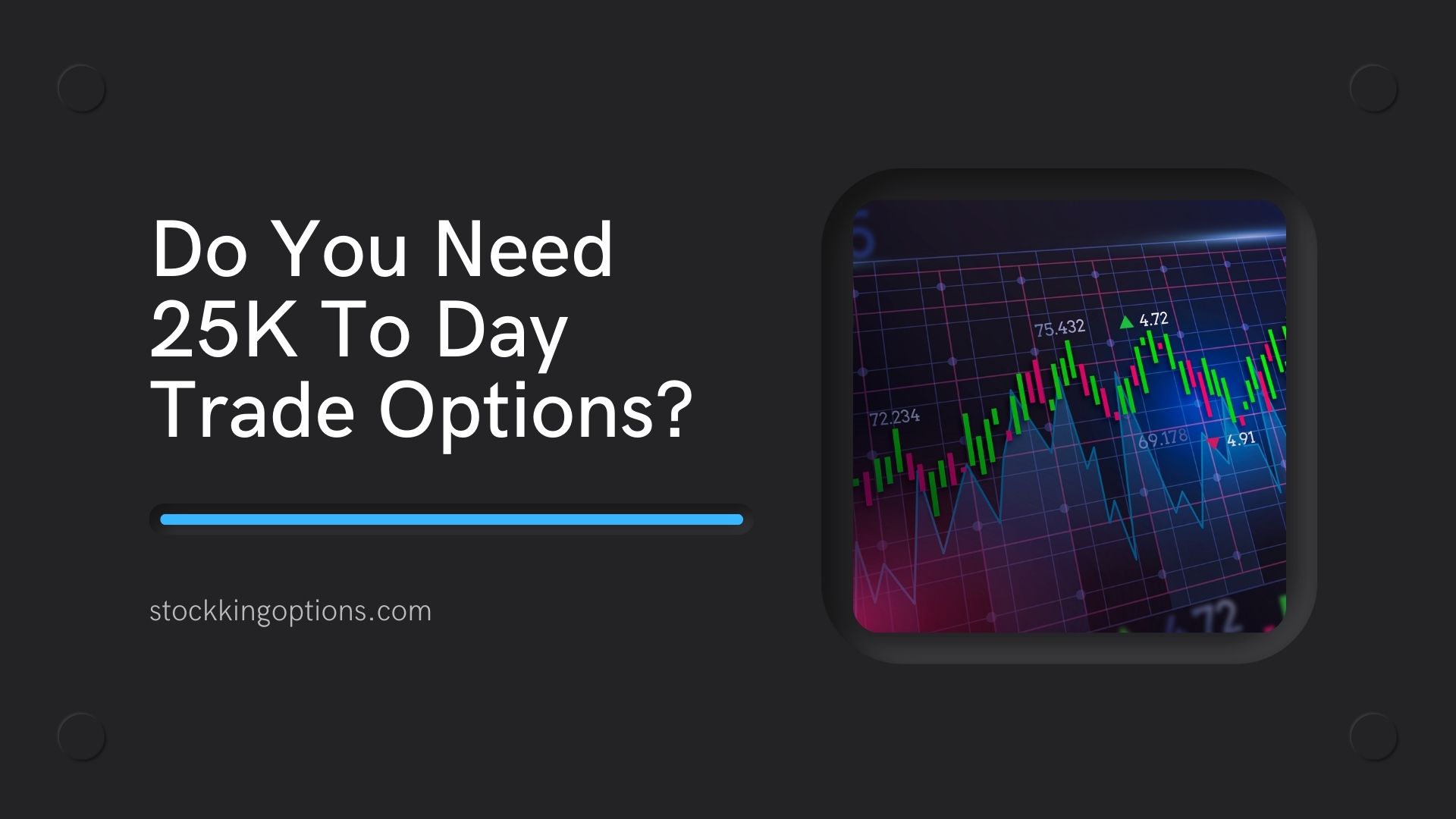
Key Takeaway: Day trading options may or may not require a $25,000 account minimum, depending on your broker and location. Explore alternatives and regulations for successful trading.
Do you need $25,000 to day trade options? It depends on your broker and location. While some brokers impose this requirement, others do not. Understanding regulations and exploring alternatives is crucial for aspiring day traders.
Understanding The Pattern Day Trader Rule
1. Understanding The Pattern Day Trader Rule:
Day trading has become an increasingly popular form of trading in recent years, especially with the rise of online brokerage platforms and accessible technology. This type of trading involves buying and selling securities within the same day, with the goal of making a profit from short-term price fluctuations. However, for those looking to get into day trading, it is important to understand the rules and regulations that govern this type of trading.
One such rule that traders need to be aware of is the Pattern Day Trader (PDT) rule, which was put in place by the U.S Securities and Exchange Commission (SEC). This rule was created to protect individual traders from taking on excessive risks in day trading activities. It applies to margin accounts, where traders can borrow funds from their broker to make trades.
According to the PDT rule, a trader must maintain a minimum account balance of $25,000 in order to engage in more than three day trades within a five-day rolling period. A day trade is defined as buying and selling or shorting and covering the same security on the same day. If a trader makes four or more day trades within this time frame without meeting this minimum requirement, they will be flagged as a pattern day trader.
So why does this rule exist? The main reason is that day trading carries high risks due to its fast-paced nature and potential for significant losses if not done carefully. By imposing this minimum account balance requirement on pattern day traders, it helps ensure that they have enough funds available to cover any potential losses.
It’s also important for traders to note that once they are classified as a pattern day trader, they must continue to meet the $25,000 minimum requirement even if their account falls below this amount due to market fluctuations or losses. Failure to do so may result in restrictions being placed on their account by their brokerage firm.
In addition to maintaining the required account balance, there are other rules that pattern day traders must follow. For example, they must use a margin account for day trading and cannot use cash accounts. They are also not allowed to hold positions overnight using borrowed funds.
Understanding the Pattern Day Trader rule is crucial for anyone looking to get into day trading. It is important for traders to carefully manage their accounts and adhere to the rules in order to minimize risks and ensure a successful and sustainable trading experience.
Assessing Capital Requirements
When it comes to day trading options, assessing capital requirements is a crucial step in determining whether or not you have enough funds to start trading. Day trading options involves buying and selling contracts within the same day, which requires a certain level of financial stability and risk management.
The first aspect to consider when assessing your capital requirements for day trading options is the minimum account balance required by your chosen brokerage firm. Most brokers have different minimum balance requirements for different types of accounts. This could range from $500 to $25,000 or more. It’s important to research and compare various brokers to find one that best fits your budget.
Furthermore, you need to determine your personal financial situation and how much capital you can afford to invest in day trading options. It’s crucial to never risk money that you cannot afford to lose as there is always the potential for losses in any type of trading. Your investment goals should also be taken into consideration – are you looking for short-term gains or long-term investments? This will affect how much capital you will need for your trades.
Another factor that affects capital requirements is the type of option contracts you plan on trading. Options come in various sizes – standard, mini, jumbo – with varying prices per contract. Standard contracts typically represent 100 shares of an underlying stock, while mini contracts represent 10 shares and jumbo contracts represent 1,000 shares. The price per contract can range from a few dollars up to hundreds or even thousands of dollars depending on the stock price and strike price.
In addition, liquidity plays a significant role in determining capital requirements for day trading options. Liquidity refers to how easily an option contract can be bought or sold without significantly affecting its market price. Highly liquid options tend to have lower bid-ask spreads which translates into lower transaction costs for traders. Therefore, it’s essential to choose highly liquid stocks and options when calculating your capital needs.
It’s crucial to have a risk management plan in place when assessing your capital requirements for day trading options. This involves setting stop-loss orders and having a diversified portfolio to mitigate potential losses. It’s recommended to never invest more than 2% of your total capital into one trade.
Assessing your capital requirements is an essential step before starting day trading options. It requires careful consideration of various factors such as minimum account balance, personal financial situation, investment goals, option contract type and liquidity. Having a risk management plan in place is also crucial for successful trading. By carefully evaluating these factors, you can determine the appropriate amount of capital needed for day trading options and avoid any unnecessary risks that may lead to financial losses.
Exploring Low-Cost Trading Options
When it comes to day trading options, one of the most common concerns among beginners is the cost involved. Many people assume that they need a large amount of capital, such as $25,000, to start day trading options. However, this is not necessarily true.
There are many low-cost trading options available for those who are looking to get into day trading without breaking the bank. In this section, we will explore some of these options and discuss their potential benefits and drawbacks.
1. Online Discount Brokers
One of the most popular low-cost options for day traders is using an online discount broker. These brokers offer lower commission fees compared to traditional full-service brokers, making them a more affordable option for those with limited funds.
Online discount brokers often have user-friendly platforms and provide access to real-time market data and analysis tools. This can be particularly useful for active traders who rely on fast execution and timely information.
However, it’s important to note that some discount brokers may have limitations on certain types of trades or require minimum account balances. Therefore, it’s crucial to do thorough research before choosing an online broker.
2. Commission-Free Trading Apps
Another low-cost option gaining popularity in recent years is commission-free trading apps such as Robinhood or Webull. These apps allow users to trade stocks, ETFs, and options without paying any commissions or fees.
While these apps can be appealing due to their zero-fee structure, they may not be suitable for all types of traders. For example, they may not offer advanced charting tools or technical indicators needed by more experienced traders.
Moreover, there may be hidden costs associated with these free platforms such as interest on margin accounts or payment for order flow (PFOF). It’s essential to understand all the potential costs involved before using commission-free apps for day trading activities.
3. Paper Trading Platforms
For those who want to gain experience in day trading without risking any real money, paper trading platforms can be an excellent low-cost option. These platforms simulate the real market environment and allow users to practice trading strategies without incurring any losses.
Paper trading can be particularly useful for beginners as it allows them to get a feel for the market and test different strategies before committing capital. However, it’s worth noting that paper trading doesn’t involve emotions or risk management, which are crucial aspects of real-world trading.
There are various low-cost options available for day traders. Each option has its own set of advantages and disadvantages, so it’s essential to carefully consider your needs and goals before choosing a suitable platform. Remember to do thorough research and practice risk management regardless of the platform you choose. With some effort and patience, anyone can start day trading without needing a large amount of starting capital.




